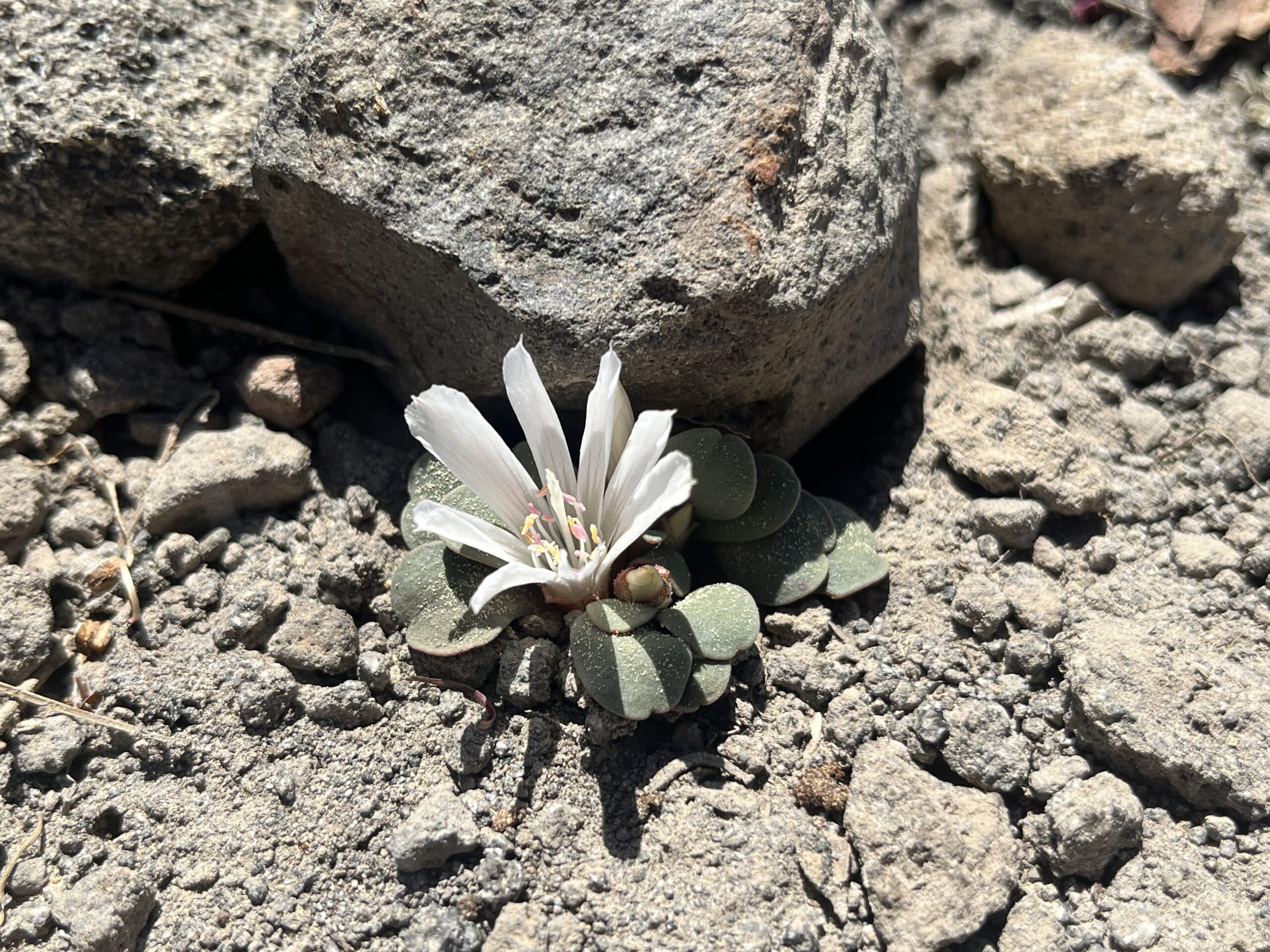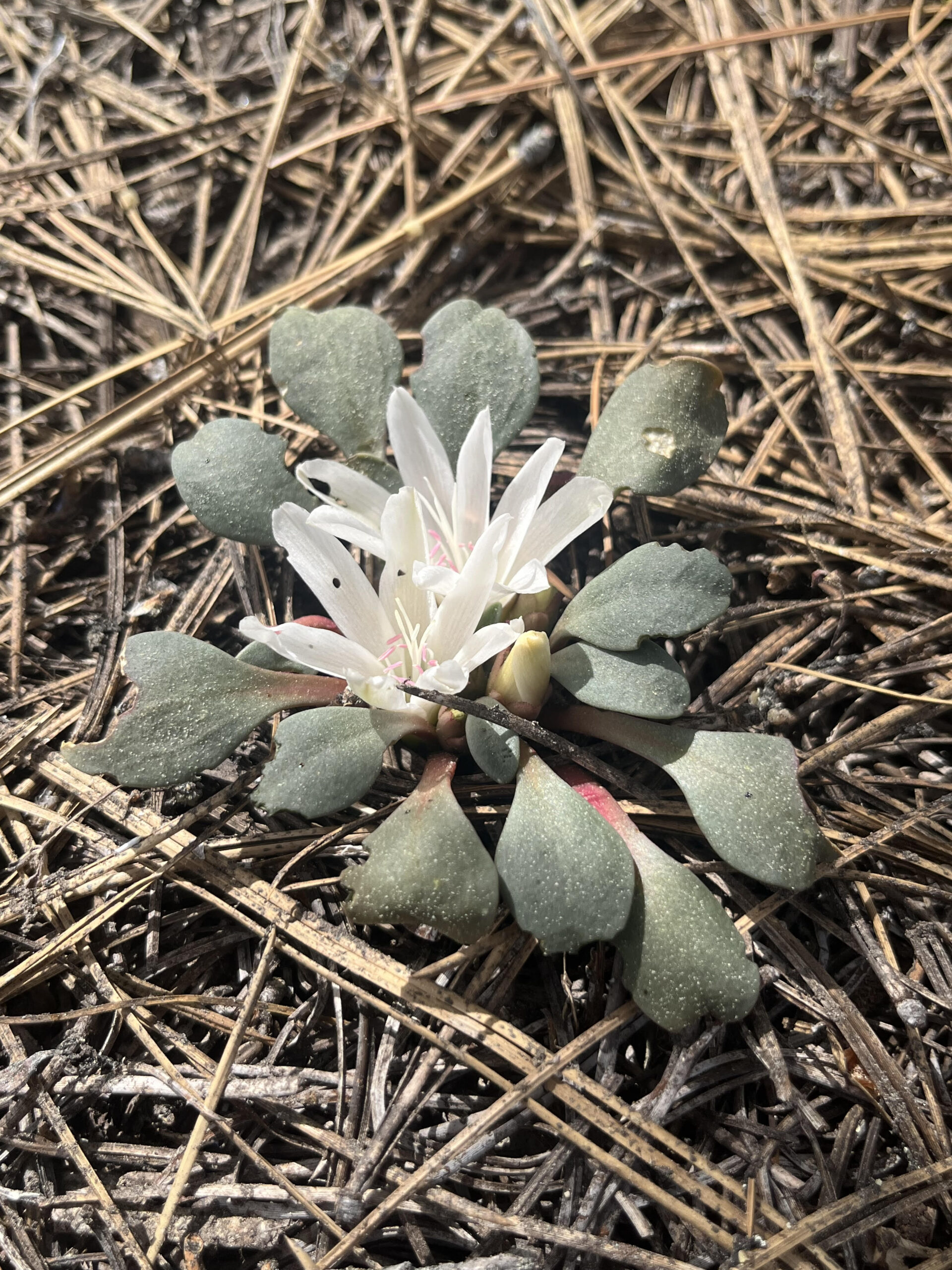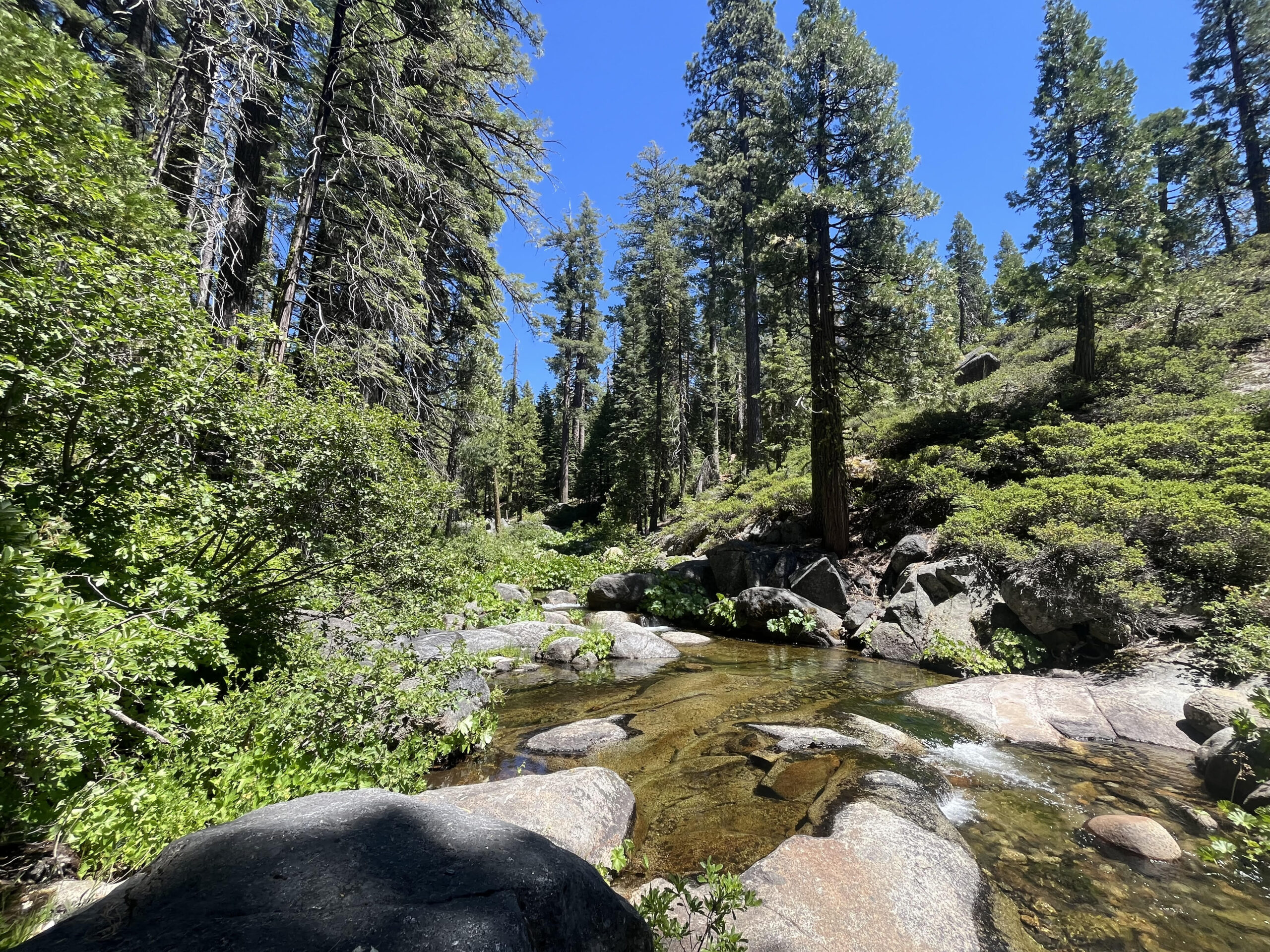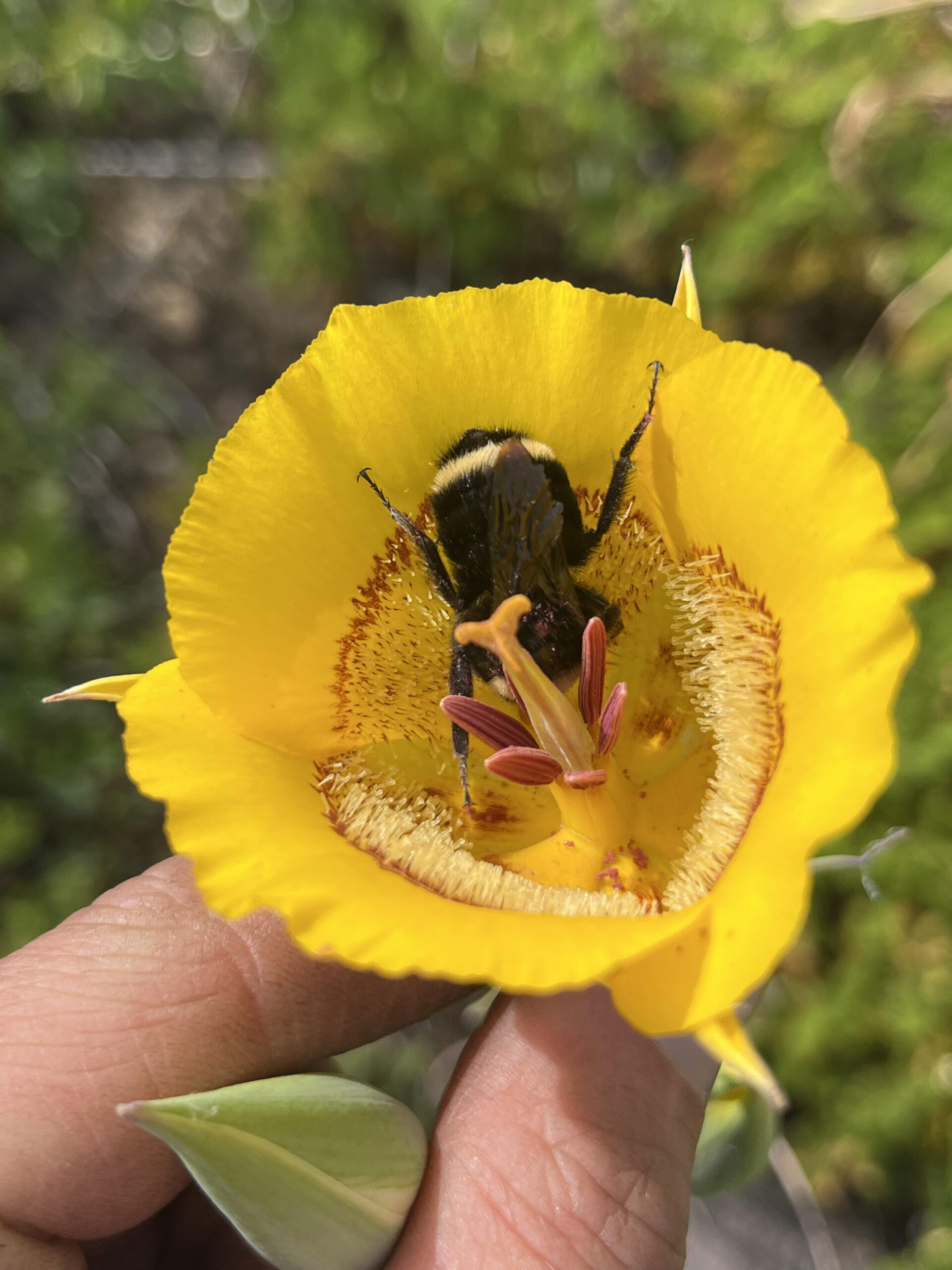With a swish and a thump, Beth secures an iridescent insect in her net. Seconds before, the bee was busy flying back and forth on a determined path, visiting a network of dangling flowers, ripe with sweet nectar. Swoop! Another bee in the jar. I snag a tiny wasp covered in pink pollen. The rush of watching tiny insects jump between flowers in a coordinated dance enthralls us. Suddenly Pauleen shouts “time is up!” and we lay down our nets.

We’re here to support Lewisia kelloggii-a rare plant of the Eldorado National Forest that makes its living on exposed lava caps and decomposed granite soils. The prostrate rosette of fleshy leaves emerges after the snow melts in spring, and the brilliant white flowers follow soon after. Pollinators flock to the exposed sites, feasting on a diverse array of nectar producers. As they buzz from tiny annuals to bushy perennials, they create a pollinator network; a web of interactions which enables both insects and plants to thrive.

Our work will help the research team at Cal State East Bay build an understanding for what pollinators are in the network of our rare Lewisia. We will then be able to collect seeds from the plants that flower earlier and later in the season, supporting the pollinators and in turn supporting the Lewisia.

The first few weeks of the field season have been an exciting time! We’ve already dealt with a fire scare, stuck vehicles (not ours hah), flat tires (also not us) and the onslaught of new knowledge that happens when moving to a new place and staring at the ground all day. It has been wonderful, and I can’t wait to deepen my relationship with this place and all the creatures that inhabit it.


